What if the secret to singing for three hours without strain is not power? But how do you shape breath, vowels, and tone? Just as Manuel García and Francesco Lamperti taught.
This guide shows how Bel Canto singing became an art and a system. You will follow ideas from the Italian schools linked to García, Pauline Viardot-Garcia, and Anna Eugénie Schoen René. The aim is simple yet demanding: beautiful singing with smooth vocalization, tonal beauty, clear diction, and effortless projection.
You will learn about breathing and appoggio, “to lean”, supporting pure vowels and tonal placement. You will see how legato, portamento, and other techniques build control. The key is that “the Italian tone is formed in the mouth and controlled by the ear.”
This overview offers a practical path for singers in the United States. It balances history with vocal technique training you can use today. Expect a steady pace: study is measured in years, and technique comes before repertoire. With Bel Canto, you can cross genres while keeping a focused, ringing core.
By the end, you will know how to turn careful breath into a steady line. How vowels tune resonance. And how disciplined drills lead to freedom onstage. This is your map to sing with beauty and endurance, not just volume.
What Bel Canto Means and Where It Comes From
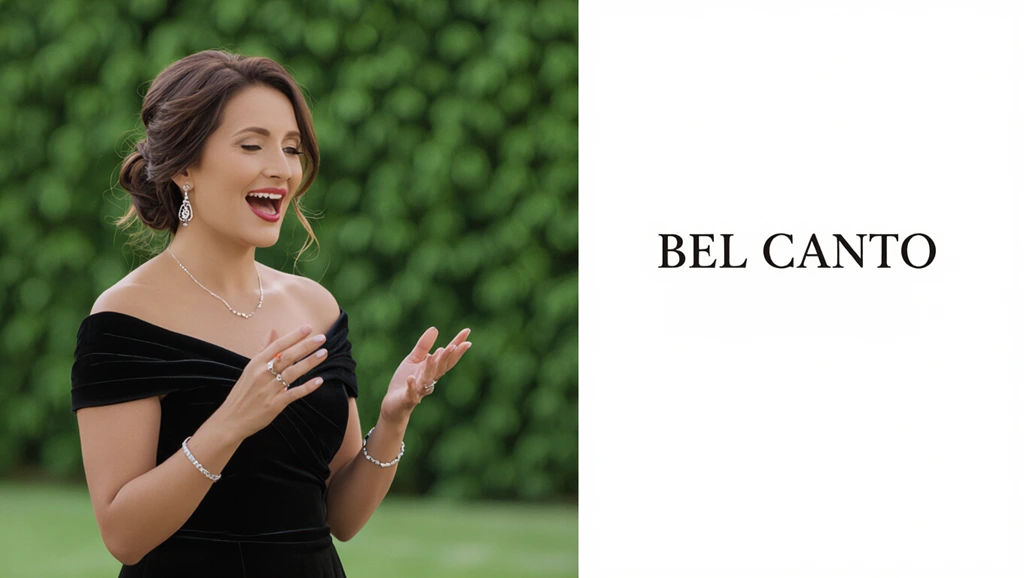
Bel Canto singing is known as “beautiful singing.” It started in Italy, in places like Florence and Venice. It comes from the late Renaissance, where musicians like Giovanni Pierluigi da Palestrina taught about line.
Later, Giulio Caccini and Francesco Antonio Pistocchi worked on making singing expressive and smooth. This was the beginning of Bel Canto.
In the Baroque era, singers like Alessandro Scarlatti and Nicola Porpora improved the art. They taught about agility, breathing, and scales. Their goal was a clear, ringing sound that could be heard in big halls.
Then, in the Romantic Era, Manuel García and Francesco Lamperti led the way. They taught singers like Pauline Viardot-Garcia. Today, singers learn from them, focusing on good breathing and clear sounds.
This teaching connects natural voice use with sound science. It helps singers move smoothly between different singing parts. Many in the United States study this to improve their singing.
Following this path makes Bel Canto practical. It teaches singers to breathe evenly and use centered vowels. Bel Canto is not just a technique; it is also a way to express on stage.
Core Bel Canto Principles That Shape Your Sound
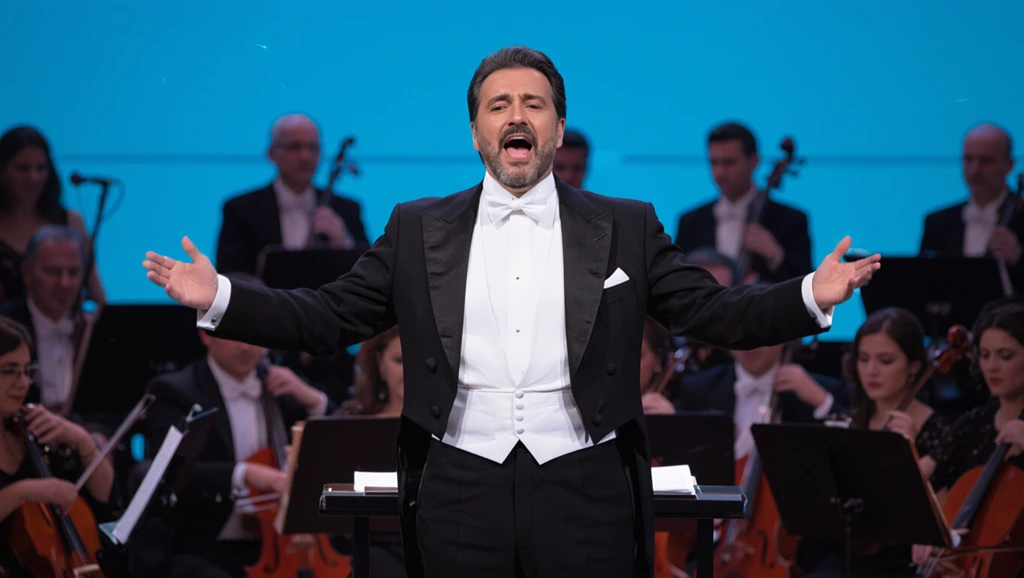
You start by training your ear. In Bel Canto, the Italian tone is shaped in the mouth. It feels right and rings clear.
Listen for clarity and balance. Then, adjust quickly. This way, you develop your voice without strain.
The body map is simple: sing from the head down. Keep your breath low and your tone supported by your chest. Your throat should stay open.
Aim your tone from the center of your head to your lips. This helps avoid nasal or swallowed sounds.
Imagine tones like pearls on a string. This guides you in singing smoothly and steadily. Each note connects to the next, keeping the phrase alive and smooth.
Start with vowels like “Ah.” Blend ah, ee, and oo for a mix of bright and warm sounds. This supports precise tonal placement and keeps your voice even.
Track the sound’s path: feel it start near your sternum, travel through an open throat, and settle at the center of your head. Then, focus on the front of your mouth. Let it show in your facial expression.
Use demonstration, imitation, and careful listening: Match pitch, vowel shape, and airflow.
Test the phrase on a pure “Ah” before adding text. This leads to reliable tonal placement and elegant singing.
Bel Canto Vocal Technique
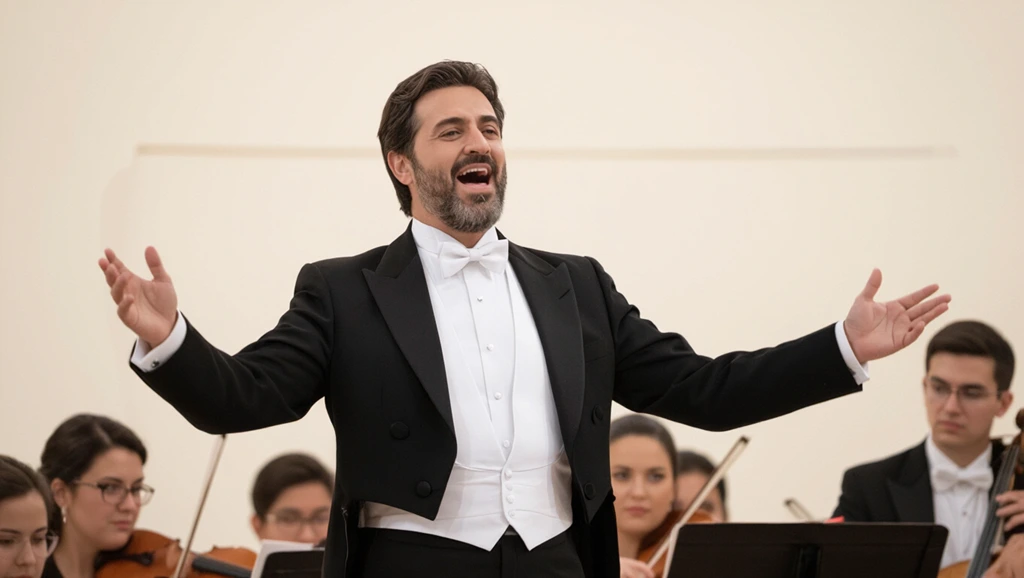
In Bel Canto, you mix breath, tone, vowels, and singing position together. You use support from appoggio and make a clear sound. This sound moves easily when singing Bel Canto.
The Lamperti school says to “lock” your breath with your lower belly. It’s like a bellows moving with your chest and belly. The Garcia method calls this “Creative Breathing.” It helps you feel your belly move while shaping your tongue and mouth.
Singing starts with a pitch that feels a bit lower but is clear and deep. Hermann Klein says to let the sound grow as you keep your breath steady. Then, your sound becomes a bell-like ring that lasts through phrases.
Training begins with the five Italian vowels: [i, e, a, o, u]. You mix [i], [u], and [a] to create a clear sound. This vowel work is key for Bel Canto singing and helps with vocal resonance.
Vocal exercises start with simple scales and then move to longer patterns. You work on tongue placement for clear speech. With practice from the Lamperti and Garcia methods, your Bel Canto skills grow.
Breath Management and Appoggio for Vocal Breath Control

Bel Canto breath work starts with appoggio, the classic “to lean” idea. You set your singing position before sound, feel buoyant expansion, and let tone ride the air. This keeps the throat open and the jaw free, supporting the voice without strain.
Think of a bellows with two handles. The lower handle—the abdomen—gently descends as the upper handle—the chest—stays lifted and wide.
In the Lamperti tradition, you “lock” the lower breath, while Manuel García’s creative breathing places that support inside the tone for clean vowels and even lines.
Start by releasing the belly on inhale, widening the ribs, and keeping the chest calmly high. On the exhale, resist collapse through the ribs and low abs. This steady airstream powers legato, sostenuto, messa di voce, and long phrases, forming the core of your vocal breath control.
Let the pelvis ground you as you rise through the sternum. The chest is the basis of singing, giving a stable column for resonance and projection. With true appoggio, you equalize registers, prevent a nasal tone, and support the voice for extended passages in rehearsals and onstage.
Build the habit with daily vocal technique training. Try gentle five-note patterns, sustained scales, and soft-to-loud swells while holding the ribcage open. Track consistency, not force.
Over time, breathing for singing will feel light yet secure, and your airflow will stay smooth from onset to release.
Vowel Training and Vocal Resonance Techniques

You start with vowel training on the five Italian vowels: [i], [e], [a], [o], [u]. First, aim for pure vowels. Then, blend [i], [u], and [a] into a unified sound. This mix adds brightness and depth to your voice, fitting the Bel Canto singing method.
Learn by imitation. Your teacher shows you; you follow by ear. Keep your mouth open, as taught by Manuel García and Francesco Lamperti. This helps keep the sound clear and round.
Feel the sound start in your sternum, then release through your open throat. These techniques make your voice sound like a bell, carrying without effort.
Practice vowels before words. Once your vowel tone is steady, add diction. Move your tongue smoothly, keeping your throat open. This helps maintain a smooth sound and avoids nasal sounds.
Do short drills to improve your vowels. Glide on [i]-[a]-[u]-[a] to balance your sound. Test the chiaroscuro [a] on slow scales. Keep your breath calm, jaw loose, and cheeks lifted. This will help your voice sound consistent and clear.
As you get better, focus on feeling the sound, not just making it loud. Aim for a free tone that follows the masque and stays even. With practice on Italian vowels and vocal techniques, your voice will become clearer and responsive.
Essential Bel Canto Techniques for Vocal Skill Development

To improve your voice, start with breath control and tone shaping. Use the fior di labbra method. Begin with vowel exercises to get a clean sound.
Then, learn Bel Canto techniques to enhance your voice. These skills help you sing with ease and purpose.
First, practice legato singing. This means connecting notes smoothly. Add portamento for smooth transitions between notes.
Use sostenuto for a steady tone and staccato for clear notes. These techniques keep your singing expressive without straining.
Work on dynamics with mezza voce and messa di voce. Practice even changes in volume. A good trill helps with timing and control.
These three types of singing guide your style. Spianato is smooth, Fiorito is agile, and Declamato is speech-like. Practice switching between styles.
Keep your larynx relaxed and avoid nasal sounds. Support your voice well.
Practice sequences that start with simple vowels and move to complex patterns. Use slow scales and arpeggios to apply Bel Canto techniques gently.
As you get better, let music guide you. Choose techniques that enhance the song, not the other way around. Always focus on breath and tone.
Regular practice turns your singing into a true expression of freedom.
Bel Canto Vocal Exercises to Improve Range
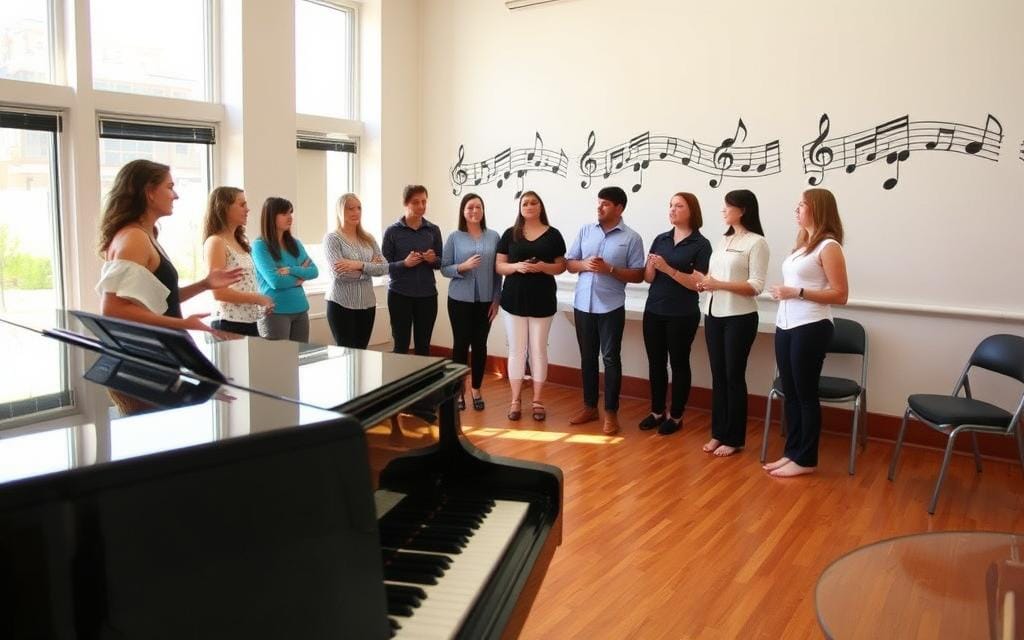
Start with pure vowels on five-note scales to stabilize breath and resonance. These exercises help set appoggio and keep the tongue high and free. They also center tone. Aim for even onset and release, then add stepwise expansion to gradually improve vocal range without strain.
Next, work on sostenuto on mid notes, holding a steady tone while you monitor resonance alignment. Keep the ribs buoyant and the jaw loose. Shift the same note through different vowels to calibrate placement before you add text.
Build speed with slow–fast–slow patterns for agility drills. Start at a comfortable pitch, then climb by half steps. Keep consonants light so the vocal exercises favor legato, not jaw action, and keep pitch core bright yet round.
Practice messa di voce on E4–G4 for most voices, later moving higher as control grows. Swell from piano to forte and return to piano without wobble. This develops dynamic range and helps you improve your range while keeping timbre.

Add interval slides with tasteful portamento to blend registers. Glide a third, then a fifth, keeping resonance alignment stable through the shift. Follow with clean staccato patterns for clarity, avoiding breathy puffs or hard closures.
Include trill practice for even oscillation supported by appoggio. Begin with measured alternations, then release to a free trill.
Coordinate tongue without tension so diction remains crisp when you later add text.
Support accuracy with phonetic charts from sources used in conservatories for Italian, French, German, and English. Delay full text until vowel shape and tonal focus are reliable, then layer in lyrics to protect line and style.
Track sessions by range, tempo, and ease. Rotate agility drills with sostenuto and messa di voce so muscles recover.
Over time, the sequence of these exercises can span two octaves or more while preserving balance and artistry.
How to Build a Vocal Training Program

To build a vocal training program, start with technique first. Begin with lessons on breath, posture, and vowels. Then, learn about tone placement and smooth singing.
After mastering these basics, add expressive singing and clear diction. This will help you sing with emotion and clarity.
Make a simple daily practice plan. Start with exercises on breath and gentle starts. Then, practice singing scales and placing your tone correctly.
Choose a specific skill to work on each day. This could be singing fast or smoothly. End with gentle humming to relax your voice.
As you get better, aim to sing in a wider range. Keep your tone even and your core strong. Avoid singing with your nose or throat.
Set milestones to track your progress. These include stable breathing, smooth singing, and clear vowels. Each goal helps you sing better.
Get feedback from teachers who follow the García or Lamperti method. Use books and online resources for exercises and tips. Plan your lessons to keep your practice focused.
Start with simple songs and gradually add more challenging ones. Always connect your practice to your goals in vocal training and Bel Canto singing.
Benefits of the Bel Canto Singing Method
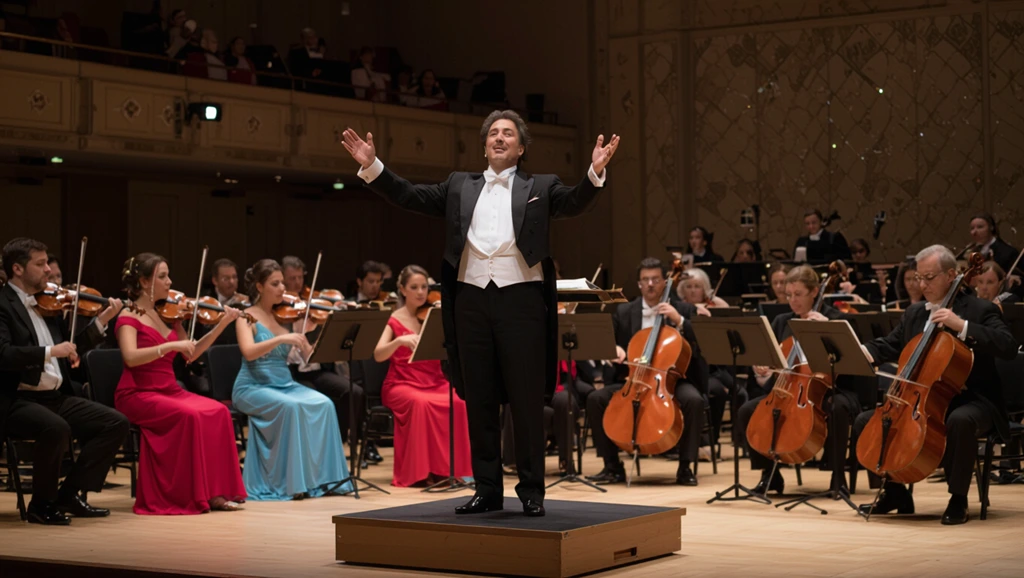
Training with Bel Canto improves your vocal health. It focuses on appoggio, vowel clarity, and resonance. This method helps you breathe better and keep your throat open.
As you practice, your voice becomes clearer and less strained. Your speaking voice will sound as good as your singing voice.
Bel Canto singing lets you sing in a wider range. You can go from very soft to very loud without losing quality. Your voice will ring out clearly, even without amplification.
This method makes your voice strong and flexible. You can sing for a long time without getting tired. It also helps prevent vocal problems like swelling or nodules.
Bel Canto singing gives you the freedom to express yourself. It helps you sing in different styles, like opera, jazz, and pop. You can do this without losing your voice’s health or style.
This approach has a long history. It comes from the teachings of Manuel García and Francesco Lamperti. Today, it is used in many music schools and studios.
Getting Started: Study Timeline and Learning Resources

Learning Bel Canto is like learning a new language. It can take years, not weeks. Start by learning breath, vowels, and even tone in the first 6 to 12 months.
After that, spend 3 to 5 years mastering technical skills. Then, add roles and styles to your repertoire. Your progress depends on how fast you learn and your daily practice.
Find a teacher who follows the Garcia/Lamperti tradition. Look for studios that go back to Pauline Viardot-García, Manuel García, and Francesco Lamperti. In New York City, in-person lessons are great. But online lessons can offer real-time coaching as well.
Build a library of Bel Canto resources and vocal training materials. Focus on appoggio, pure vowels, placement, and drills. Look for “Authentic Bel Canto Vocal Training” packets with exercises and vowel charts.
Use digital libraries for historic method books in PDF, ePub, and Kindle formats. Start with a free trial, download for personal use, and cancel anytime. Choose carefully from large catalogs with many resources.
Make a weekly plan for online lessons, slow-tempo exercises, and reading. Track your progress in clarity, legato, and range. Update your goals and materials every quarter. With dedication and the right guidance, Bel Canto becomes a rewarding craft.


